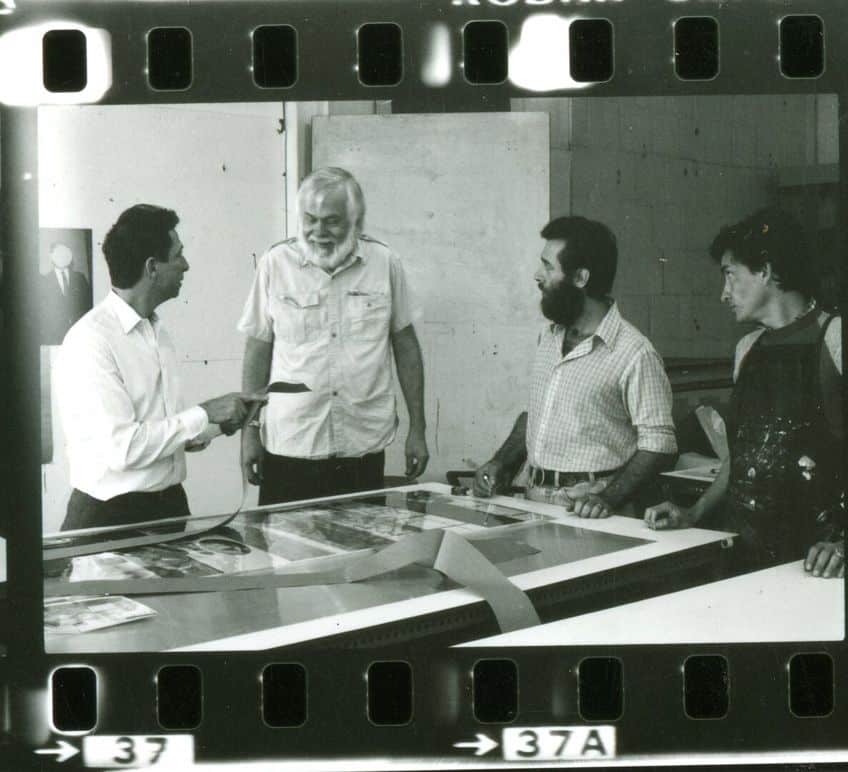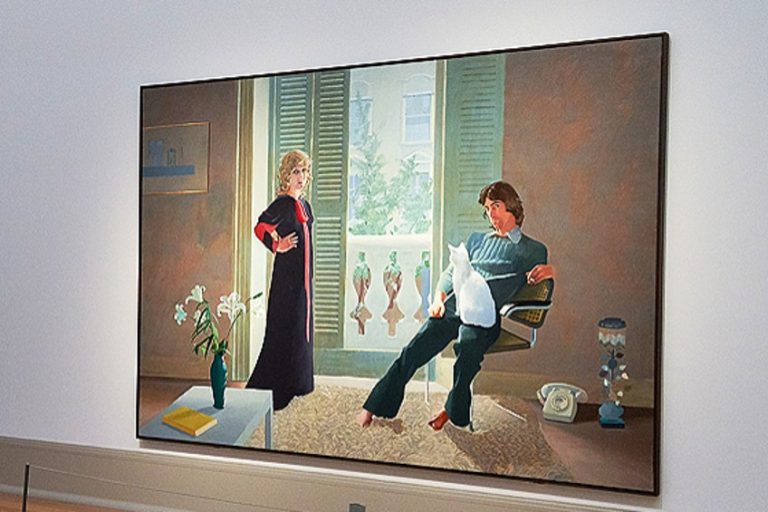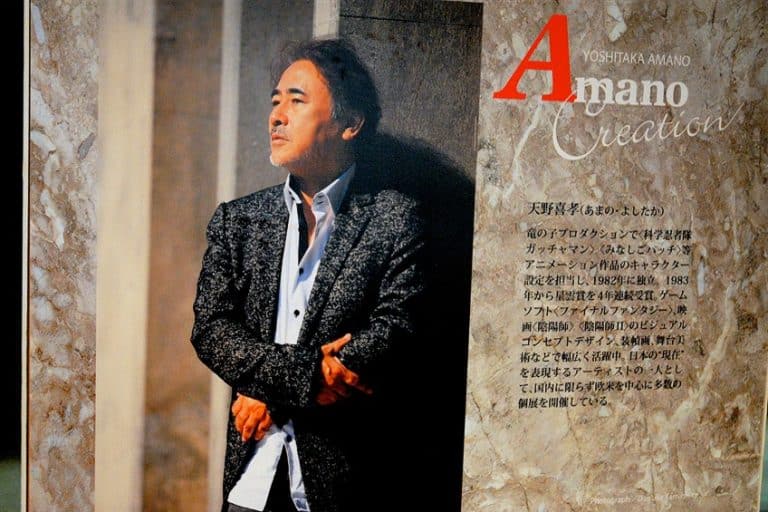John Baldessari – Explore the Famous Contemporary Painter
The world of contemporary art has been significantly shaped by the innovative and thought-provoking creations of John Baldessari. As a prominent figure in the realm of conceptual art, John Baldessari’s artistic contributions have left an indelible mark on the art world. Renowned as both a visionary artist and a pioneer of conceptualism, his boundary-pushing works span various mediums, with John Baldessari’s photography standing out as a particularly captivating facet of his artistic repertoire. Through his distinctive approach to art, Baldessari challenges traditional norms, sparking conversations and inviting viewers to explore the intersections of meaning, image, and perception.
Biography: Who Was John Baldessari the Artist?
| Date of Birth | 17 June 1931 |
| Date of Death | 2 January 2020 |
| Place of Birth | National City, California, United States |
| Nationality | American |
| Style | Contemporary art and Conceptual art |
John Baldessari was born in 1931 in National City, California, and embarked on a transformative journey that would redefine the boundaries of contemporary art. His early artistic inclinations were nurtured during his childhood, and he later pursued formal training at San Diego State College and the University of California, Berkeley. In his formative years as a young artist, Baldessari’s works displayed a blend of painting and text, foreshadowing his future exploration of conceptual art.
However, it was in the 1960s that John Baldessari truly found his creative voice and began to make a lasting impact on the art world. With a series of groundbreaking artworks that challenged the conventional norms of artistic expression, he earned recognition as a pioneer of conceptual art. Employing a combination of language, imagery, and unconventional materials, he delved into themes of language, communication, and interpretation, offering viewers a new way of engaging with art. His I Will Not Make Any More Boring Art (1971) exemplified his audacious spirit and his commitment to pushing artistic boundaries and will be further discussed later in this article.

Baldessari’s influence expanded further as he ventured into the realm of photography. His amalgamation of text and image in his photographic works not only redefined the medium but also invited viewers to question the relationship between visual representation and linguistic meaning. This innovative approach reached its pinnacle in his iconic series like Throwing Three Balls in the Air to Get a Straight Line (Best of Thirty-Six Attempts) (1973), showcasing his penchant for blending wit with profound conceptual depth.
As his career advanced, John Baldessari achieved remarkable milestones, including numerous solo exhibitions at prestigious institutions like the Museum of Modern Art in New York and the Tate Modern in London. His contributions to art history were solidified through his professorship at the California Institute of the Arts, where he mentored and inspired generations of emerging artists, leaving an enduring legacy in the world of education as well.
John Baldessari’s innovative spirit demonstrated through his boundary-pushing conceptualism and revolutionary use of photography, not only reshaped the contemporary art landscape but also transcended traditional artistic norms.
His exploration of the interplay between language, image, and meaning continues to reverberate through the art world, inspiring artists to challenge conventions and prompting audiences to engage with art in new and intellectually stimulating ways.
Capturing the Zeitgeist: John Baldessari’s Photography in the Turbulent American Socio-Political Landscape
John Baldessari’s photographic artistry transcends mere aesthetics, embodying a dynamic interplay between text and imagery that encapsulates the socio-political tapestry of 1960s and 1970s America. Amidst the fervent civil rights movement, anti-war protests, and a pervasive atmosphere of change, Baldessari’s innovative approach to photography mirrored the era’s complex narratives, reflecting the collision of tradition and transformation.
Photography as a Revolutionary Medium
During a period marked by both artistic experimentation and sociopolitical upheaval, photography itself was undergoing a renaissance. Artists like Baldessari were keenly attuned to the transformative power of the medium, pushing its boundaries beyond traditional documentation.
As traditional norms were challenged, the fusion of text and image in Baldessari’s work resonated with the era’s passionate debates on language’s capacity to reshape perception and disrupt hierarchies.
Deconstructing Language and Visuals
Baldessari’s unique fusion of visual and textual elements in works like Wrong (1966 – 1968) epitomized the era’s countercultural ethos. Through this deliberate juxtaposition, he tapped into the zeitgeist’s spirit of defiance and exploration, inviting viewers to participate in a multi-layered dialogue. By divorcing images from their expected contexts and placing them alongside cryptic statements, Baldessari invited audiences to question, interpret, and reassess their own understanding of reality.

A Humorous Overture to Rebellion
The era’s embrace of irony and irreverence found an apt companion in Baldessari’s work. His use of humor, as exemplified by I Will Not Make Any More Boring Art (1971), mirrored the generation’s rejection of staid values and its quest for authenticity.
The repetition of this defiant phrase, coupled with the playful schoolteacher’s script, embodied the era’s call to cast off monotony and embrace self-expression.
Legacy: Echoes of Change
John Baldessari’s photographic oeuvre remains intrinsically intertwined with the era’s radical transformation. His novel amalgamation of text and image challenged the conventions of both photography and communication, offering a window into a society grappling with identity, authority, and voice. In embracing the spirit of his times, Baldessari’s art continues to serve as a touchstone for contemporary artists and audiences alike, prompting us to reflect on the enduring relevance of his vision in an ever-evolving world.
Unveiling the Ingenious Craftsmanship: Technical Characteristics of John Baldessari’s Artworks and Style
John Baldessari’s artistic brilliance lies not only in his thought-provoking concepts but also in his masterful execution. His works transcend traditional artistic confines, embodying a distinctive fusion of elements that challenge conventional norms and perceptions.
This section of the article delves into the technical underpinnings of Baldessari’s artistry, uncovering the ingenious techniques and stylistic attributes that distinguish his creations.
Conceptual Fusion: Text and Image
At the heart of Baldessari’s style lies a unique blend of text and image, a hallmark that defines his conceptual approach. Through this amalgamation, he ignites a dynamic interplay between linguistic meaning and visual representation. The careful juxtaposition of seemingly disparate elements infuses his works with multi-layered narratives, prompting viewers to engage in a complex dialogue that extends beyond the surface.

Photographic Manipulation
Baldessari’s exploration of photography goes beyond mere documentation, as he manipulates and distorts images to evoke new interpretations. His artistry often involves cutting, cropping, and recontextualizing photographs, a process that challenges the viewer’s visual expectations and prompts reevaluation.
By deconstructing images, he dismantles their inherent meanings, inviting us to explore the implications of altered perspectives.
Playful Subversion of Norms
One of the defining characteristics of Baldessari’s style is his propensity for playful subversion. His artistic process often involves taking mundane objects, images, or words and placing them within unexpected contexts. This subversion disrupts traditional associations, generating humor and sparking intellectual inquiry. By transgressing boundaries, he impels us to reexamine preconceived notions and embrace the unexpected.

Layered Narratives and Fragmentation
Baldessari’s artworks are renowned for their intricate layering and fragmentation. He employs visual and textual layers to construct narratives that demand active viewer engagement. These layers unveil themselves gradually, creating a narrative mosaic that encourages contemplation and deeper exploration.
This technique mirrors the complexity of his subjects, prompting us to embrace nuance and embrace diverse perspectives.
Minimalism and Bold Color Palette
While his focus on text and imagery takes center stage, Baldessari’s artistry is equally marked by minimalism and a bold color palette. Often characterized by stark backgrounds and restrained color choices, his minimalist approach emphasizes the visual impact of his chosen elements. This restraint guides the viewer’s attention, allowing the convergence of text and image to command the narrative.
Decoding Visual Provocation: A Deeper Look into John Baldessari’s I Will Not Make Any More Boring Art (1971)
| Title | I Will Not Make Any More Boring Art |
| Date | 1971 |
| Medium | Lithograph |
| Edition | 50 |
| Dimensions (cm) | 57 x 76.4 |
| Location | The Museum of Modern Art, New York City, United States |
John Baldessari’s artwork I Will Not Make Any More Boring Art (1971) stands as an iconic testament to his conceptual brilliance and innovative artistic vision. This seemingly simple piece, both visually and conceptually engaging, encapsulates Baldessari’s unique approach to challenging artistic norms and provoking thought.
Let’s delve into a comprehensive analysis of this renowned artwork, uncovering its layers of meaning and the artist’s subtle playfulness.
Visual Composition: Minimalism With a Purpose
At first glance, the artwork appears stark and minimalistic. A monochromatic lithograph portrays Baldessari’s own hand in the act of writing the titular phrase, I Will Not Make Any More Boring Art, as if in a notebook. The subdued background isolates the hand and the text, drawing immediate attention to the act of writing itself. This simplicity, however, is deliberate, guiding the viewer’s focus to the intersection of text and image—the core of Baldessari’s conceptual exploration.
Conceptual Depth: Defiance and Iteration
The power of this artwork lies in its deceptively simple statement—a mantra of defiance against artistic banality. The act of repetitively writing the phrase, as if a school punishment, resonates with a defiant rejection of artistic conformity. Baldessari challenges the very notion of art’s purpose, encouraging the viewer to question the boundaries between creativity and tedium.
The iterative process signifies an act of personal transformation, a commitment to break free from the mundane.
Meta-Reflection: Art As Process
I Will Not Make Any More Boring Art serves as a meta-commentary on the artistic process itself. By rendering the process of writing into art, Baldessari elevates the mundane into the extraordinary. This blurring of lines between the act of creation and the creation itself compels us to reevaluate how we perceive and value art. The act of repetition becomes an artistic ritual, transcending mere penmanship to symbolize the artist’s journey toward liberation from artistic constraints.

Viewer Engagement: A Thought-Provoking Dialog
Baldessari’s artwork prompts viewers to engage in a dynamic dialog. As we observe the image of his handwriting, we are implicated in the act of creation. The artist’s hand becomes our hand, the mantra our mantra. The artwork thus transcends its static form, inviting us to contemplate our own role in the artistic process, and challenging us to examine our assumptions about art’s purpose and the ways we interact with it.
In the realm of contemporary art, John Baldessari’s legacy shines as a beacon of innovative brilliance. As a pioneering artist, his works transcend conventional boundaries, inviting audiences into a realm where text and image coalesce in profound conversations. Whether through his daring conceptual approach, his meticulous manipulation of elements, or his transformative use of photography, Baldessari’s contributions to the art world are nothing short of extraordinary. His daring exploration of language, image, and meaning challenges artistic norms and prompts us to reconsider the very essence of creativity. With each brushstroke, phrase, and photographic frame, John Baldessari’s art reminds us that the boundaries of artistic expression are meant to be pushed, reshaped, and redefined, etching his name indelibly into the annals of art history.
Frequently Asked Questions
Why Did John Baldessari the Artist Put Dots on the Faces of His Artworks?
Baldessari strategically incorporated dots onto the faces of his artworks as a deliberate artistic choice with multifaceted implications. This technique, known as obliteration, served to challenge the traditional notion of portraiture and human identity. By obscuring facial features with colorful dots, Baldessari questioned the inherent desire to decipher and categorize individuals solely based on their appearances. This act of visual disruption pushed viewers to engage more deeply with the essence of his subjects beyond their physical attributes, inviting contemplation about the complexities of human perception, anonymity, and the often elusive nature of personal identity.
Who Was John Baldessari Inspired By?
John Baldessari drew inspiration from a diverse array of sources that spanned both artistic and intellectual realms. His approach to art was influenced by conceptualism, which emerged as a significant movement during his formative years. Figures like Marcel Duchamp, known for his pioneering conceptual works, left a mark on Baldessari’s approach to challenging artistic norms and exploring the interplay between idea and form. Additionally, Baldessari’s exploration of language and image was inspired by philosophers like Ludwig Wittgenstein, whose ideas on the limits of language and meaning resonated deeply with his conceptual endeavors. The amalgamation of these influences, along with his keen observation of everyday life and popular culture, shaped Baldessari’s distinctive artistic voice and his transformative contributions to contemporary art.
Nicolene Burger is a South African multi-media artist, working primarily in oil paint and performance art. She received her BA (Visual Arts) from Stellenbosch University in 2017. In 2018, Burger showed in Masan, South Korea as part of the Rhizome Artist Residency. She was selected to take part in the 2019 ICA Live Art Workshop, receiving training from art experts all around the world. In 2019 Burger opened her first solo exhibition of paintings titled, Painted Mantras, at GUS Gallery and facilitated a group collaboration project titled, Take Flight, selected to be part of Infecting the City Live Art Festival. At the moment, Nicolene is completing a practice-based master’s degree in Theatre and Performance at the University of Cape Town.
In 2020, Nicolene created a series of ZOOM performances with Lumkile Mzayiya called, Evoked?. These performances led her to create exclusive performances from her home in 2021 to accommodate the mid-pandemic audience. She also started focusing more on the sustainability of creative practices in the last 3 years and now offers creative coaching sessions to artists of all kinds. By sharing what she has learned from a 10-year practice, Burger hopes to relay more directly the sense of vulnerability with which she makes art and the core belief to her practice: Art is an immensely important and powerful bridge of communication that can offer understanding, healing and connection.
Nicolene writes our blog posts on art history with an emphasis on renowned artists and contemporary art. She also writes in the field of art industry. Her extensive artistic background and her studies in Fine and Studio Arts contribute to her expertise in the field.
Learn more about Nicolene Burger and the Art in Context Team.
Cite this Article
Nicolene, Burger, “John Baldessari – Explore the Famous Contemporary Painter.” Art in Context. September 5, 2023. URL: https://artincontext.org/john-baldessari/
Burger, N. (2023, 5 September). John Baldessari – Explore the Famous Contemporary Painter. Art in Context. https://artincontext.org/john-baldessari/
Burger, Nicolene. “John Baldessari – Explore the Famous Contemporary Painter.” Art in Context, September 5, 2023. https://artincontext.org/john-baldessari/.










